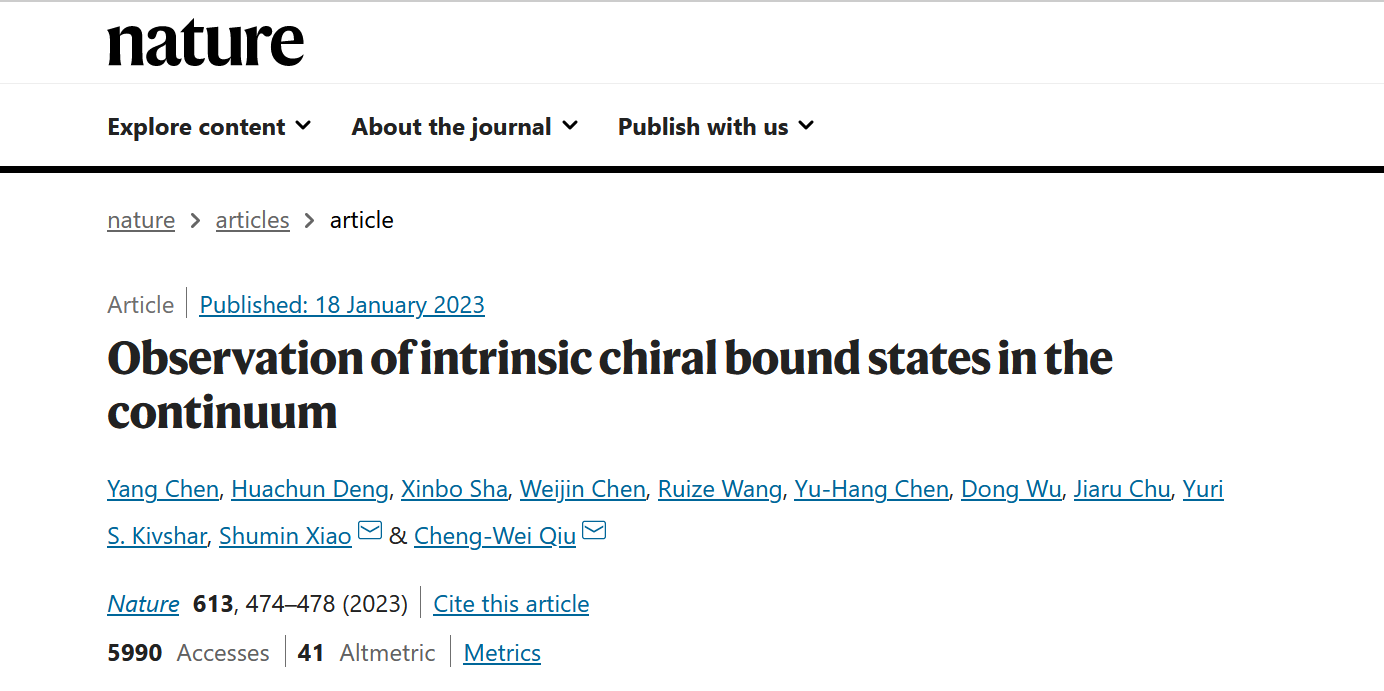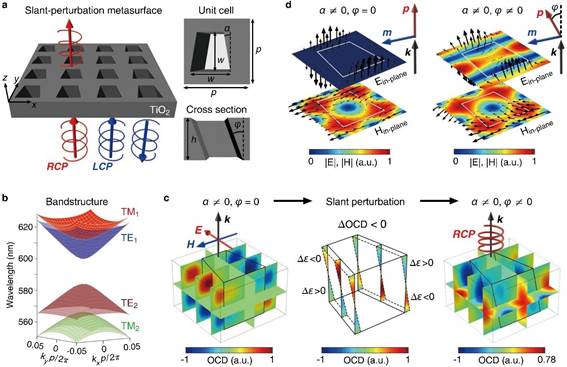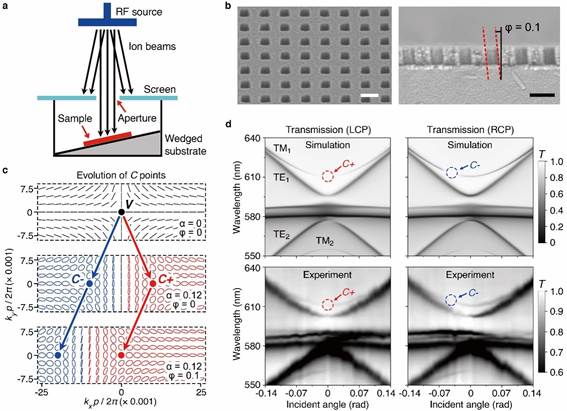
【Link:https://www.nature.com/articles/s41586-022-05467-6】
Recently, Professor Yang Chen of the University of Science and Technology of China, Professor Shumin Xiao of Harbin Institute of Technology Shenzhen Campus and Professor Chengwei Qiu of the National University of Singapore have made important progress in the intersection of micro-nano optics and chiral optics. The collaborative team introduced a small tilt disturbance in the metasurface of the medium, realized and observed for the first time intrinsic chiral bound states in the continuum (chiral BIC) with near-unity circular dichroism of 0.93 and a high quality factor exceeding 2,663 for visible frequencies, which significantly enhanced the chiral interaction between light and matter, and this research has a wide application prospect in the field of chiral optics. The research results were published in Nature on January 19, 2023, under the title Observation of intrinsic chiral bound states in the continuum.
In this work, it is innovatively proposed to use structural tilt to break the metasurface of TiO2 medium metasurface mirror symmetry, and combined with the trapezoidal nanopore design in the plane to achieve three-dimensional true chirality. A microscopic model based on the conservation of near-far-field optical chirality was developed to analyze the influence of structural perturbation on mode intrinsic chirality. By co-designing the in-plane disturbance α and out-of-plane disturbance φ, the C+ point is moved exactly to the Γ point of the momentum space, and chiral BIC is realized, and the angular resolved transmission spectrum obtained by simulation and experiment also verifies the result.

Fig. 1 | a, Schematic of the slant-perturbation metasurface to realize intrinsic chiral BICs. b, Calculated bandstructure of the metasurface with only non-degenerate modes plotted. c, Cross-sectional OCD distributions for the case of α ≠ 0, φ = 0 (left) and α ≠ 0, φ ≠ 0 (right). d, In-plane components of electric (Ein-plane) and magnetic (Hin-plane) field distributions at the central x–y plane of the metasurface without (left) and with (right) slant perturbation, along with the configurations of the corresponding electric dipole p and magnetic dipole m.

Fig. 2 | a, Unbalanced OCD integrated over the metasurface as a function of the slant angle for different quasi-BICs. b, Side-view (left) and cross-sectional (right) scanning electron microscope images of a fabricated metasurface. Scale bar, 300 nm. c, Evolution of C points over k-space for the metasurfaces of different α and φ. d, Angle-resolved transmission spectra of the metasurface under LCP (left) and RCP (right) incidence obtained from simulations (top) and experiments (bottom).

Fig. 3 | a, Incident angles for which C+ and C- points are observed for different slant angles φ. b, CD amplitude as a function of φ while α is fixed at 0.12. c, Relation between φ and α for